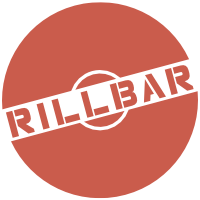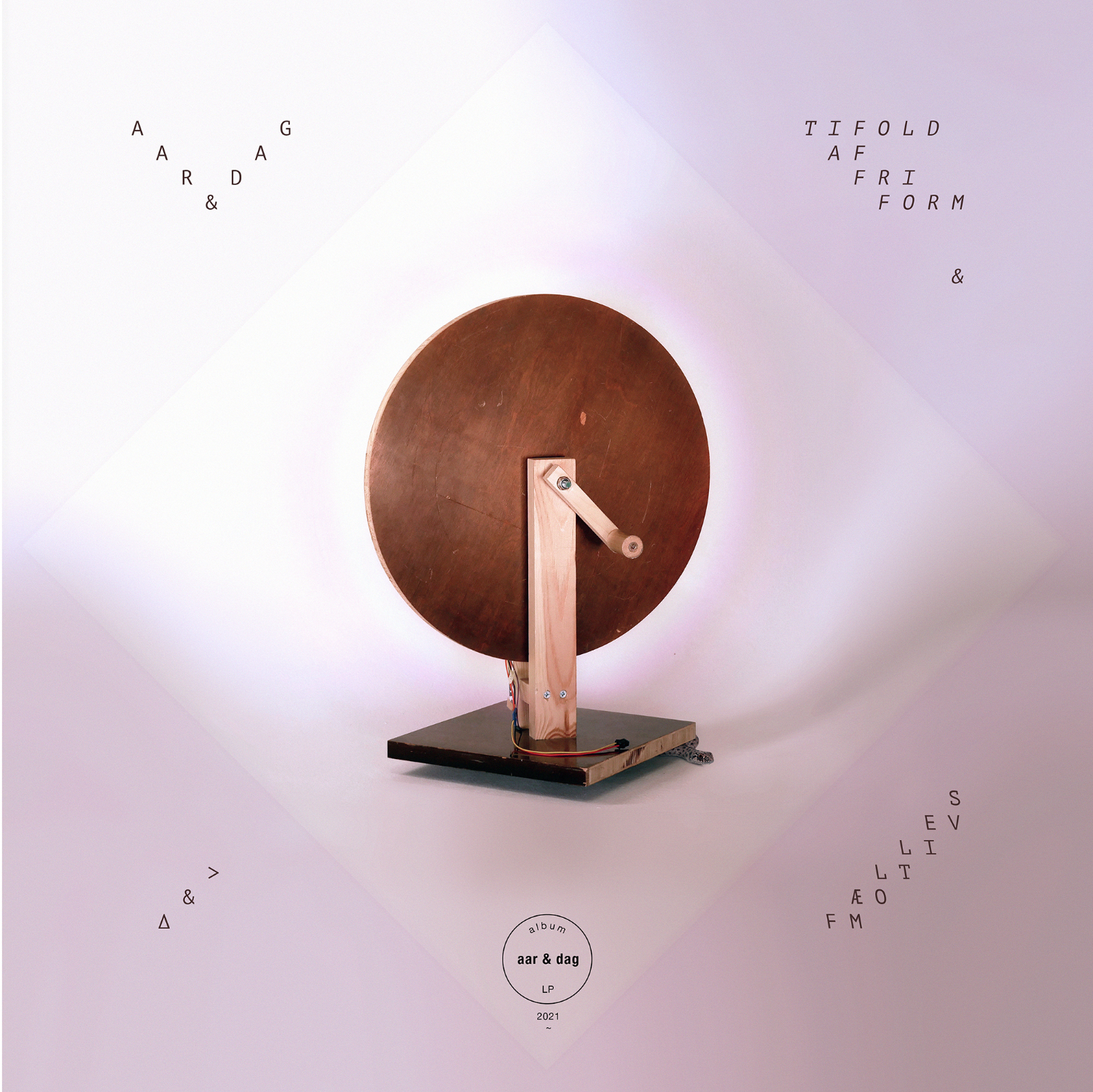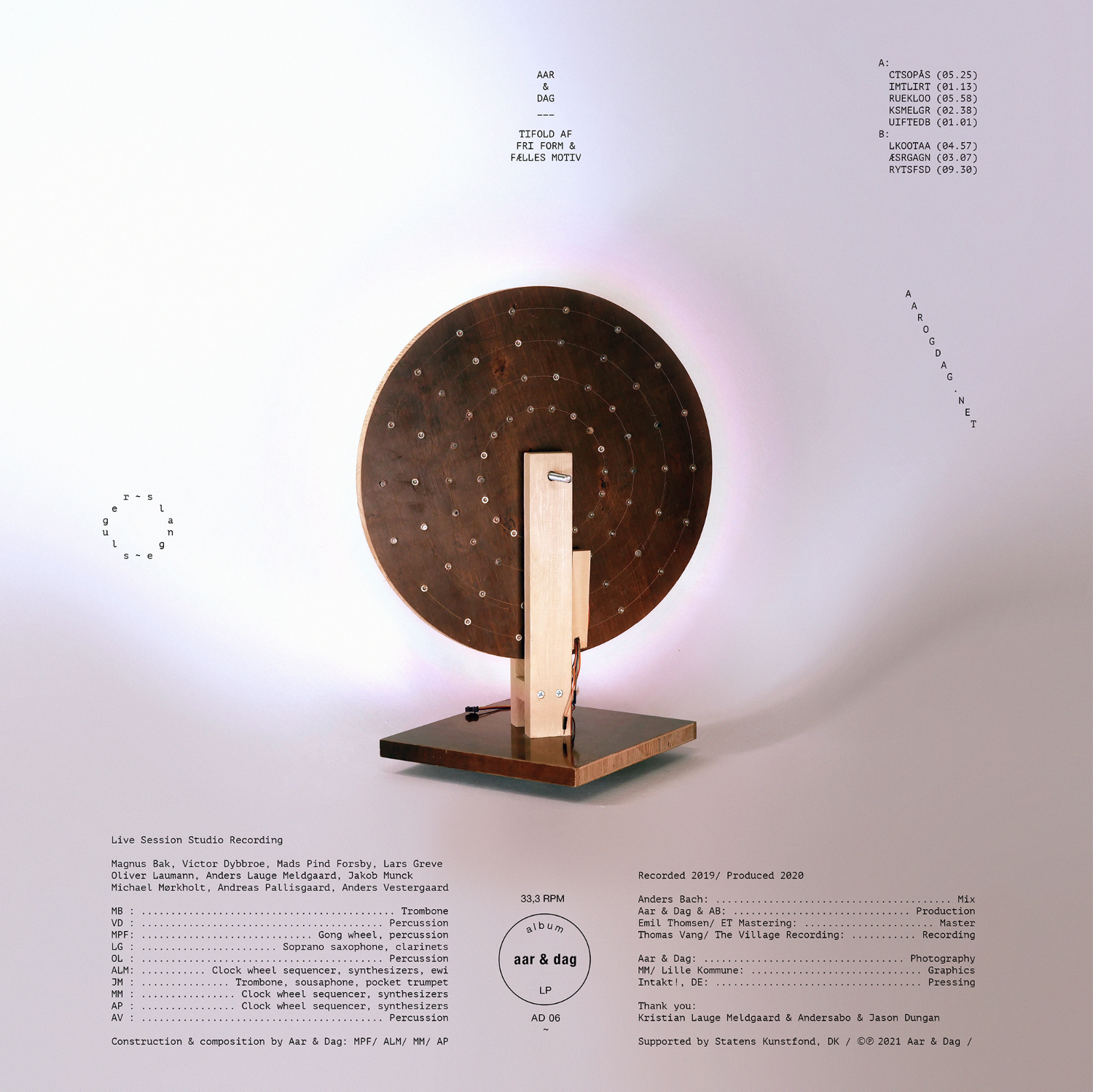Please sign in so that we can notify you about a reply
Aar & Dag er et kollektiv bestående af fire danske komponister: Andreas Pallisgaard, Mads Forsby, Anders Lauge Meldgaard og Michael Mørkholt. Hvert af de fire medlemmer har en uafhængig praksis som musiker / komponist, der arbejder med instrumentbygning, computerprogrammering, live-improvisation og noteret komposition.
Ved at bringe de fire medlemmer sammen er Aar & Dags hensigt at skabe et åbent område til undersøgelse og udforskning af nye metoder, instrumenter og systemer til komponering og udførelse af musik som en samarbejdsvillig enhed. Musikken på LP'en Tifold af Fri Form og Fælles Motiv er produktet af flere års udvikling, liveoptræden og studieindspilning, der dokumenterer Aar & Dags arbejde med et stort ensemble på 10 musikere, der inkluderer selvbyggede synthesizere og elektroniske instrumenter.
for at starte med udgangspunktet kan man se på det objekt, der er afbildet i midten af LP'ens omslag: en cirkulær trægenstand, som gruppen kalder en "urhjulssekvenser". Sequencerhjulet er monteret på et stativ med et krumtaphåndtag og en række små metalspidser fastgjort til hjulets krop. Når hjulet drejes, udløser magneter anbragt i forskellige positioner en elektronisk sensor på hjulets bund, hvilket skaber et lydmønster ved forskellige stigninger og hastigheder med variationer dikteret af musikernes hænder.
Da fire medlemmer af Aar & Dag drejer sequencerhjulene, skabes tonemønstre og rytmer, der føres ind i gruppens organiske fællesskab.
Musikere:
Andreas Pallisgaard - sequencer til urhjul, synthesizer
Anders Lauge Meldgaard - sequencer til urhjul, synthesizer, ewi
Michael Mørkholt - sequencer til urhjul, synthesizer
Mads Forsby - gonghjul, percussion
Oliver Laumann - percussion
Anders Vestergaard - percussion
Victor Dybbroe - percussion
Magnus Bak - trombone
Jakob Munck - trombone, sousafon, pockettrompet
Lars Greve - Klarinetter, sopransaxofon
Optaget i The Village Recording af Thomas Vang
Blandet af Anders Bach
Produceret af Aar & Dag og Anders Bach
Mestret af Emil Thomsen
Komposition og instrumentkonstruktion af Aar & Dag
Arduino programmering af Kristian Lauge Meldgaard




